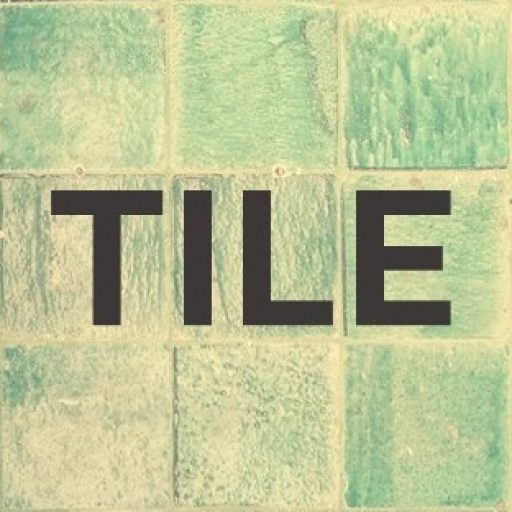 We are delighted to interview Dr Efrat Furst as part of our TILE Summer Series. Efrat, welcome to TILE! Can you briefly introduce yourself to our readers?
We are delighted to interview Dr Efrat Furst as part of our TILE Summer Series. Efrat, welcome to TILE! Can you briefly introduce yourself to our readers?
Thank you for having me, I’m excited to share my views with your readers, and hopefully hear thoughts and questions in response. I work in the space between research and education, actively communicating the science of learning with learning and teaching in real classrooms. My background is in cognitive neuroscience, I studied human memory during my MSc and PhD in the Weizmann Institute of Science in Israel. Next, I studied for a teaching certificate in science, an educating experience that introduced me to the world of education and essentially led to my practice as a communicator.
I currently divide my time and energy among teaching teachers about the science of learning and application to education, translating research findings to educational contexts, and supporting lecturers in a process of adopting research-informed teaching approaches (with the Learning Incubator at Harvard University). Previously, I taught students across ages (elementary to higher-ed), led research projects in schools with students, and taught professional development courses for teachers and lecturers. My plan is to continue and develop these pathways to further promote the communication between the fields.
One key station on my journey was joining Twitter, about two years ago. The lively community of researchers, educators and communicators is a source of information, challenges and opportunities. I’m thankful for everything that happened so far, and hope to keep interacting online and in person with this group of professionals to promote better communication for better research and better education.
You mentioned that your aim is to bridge learning sciences and education. That sounds exciting! What exactly does that mean? Can you give us some concrete examples?
Thank you for asking, this point requires some clarification. As mentioned, I define my goal as bridging the sciences of learning with learning and teaching in classrooms. For me the sciences of learning are mainly cognitive neuroscience and cognitive psychology. These fields are the sources of my knowledge and expertise, they provide the framework through which I explore pedagogy. When I teach (or write), I try to share my idea of the learning process, to combine theory, evidence and practice to create a coherent and tangible view of learning. My challenges are to select and simplify and yet keep quality and reliability, to create deep understanding and yet strong connection with practice.
I do not teach a comprehensive course in “neuroscience and education” that covers findings in neuroscience with current or future implications to education. Rather, I focus on basic aspects of learning and memory, as they are understood today and the way they converge with evidence regarding strategies like elaboration, retrieval and spaced practice.
Let’s take retrieval practice for example – pedagogically we know that it is effective to have students attempt retrieval of learned information not just for testing, but to promote long-term retention. We also know a lot about the value of effort and appropriate feedback. This pedagogical practice becomes more common as it receives vast support from cognitive psychology. There is now a strong and compelling body of evidence to support the use of retrieval practice for learning. Research is also accumulating in regard to how to use it well considering types of questions, ordering, schedule and many more. Importantly, research also reveals the short-term vs. long-term paradox (more effective strategies are usually beneficial only in the longer term) and the serious implications for inaccurate evaluations of learning outcomes by learners.
What can we learn from cognitive neuroscience? While there is not much evidence to directly connect retrieval practice to neural processes, the existing evidence provides plausible mechanisms that may underlie retrieval practice and other effective strategies. To highlight some basic findings: specific memories are represented in the brain as patterns of active neurons (that are complex and not fully understood). These patterns are created following activation in “real-time”. This stabilization is dependent on a consolidation process – where new connections between existing neurons are formed. Upon re-activation (by external or internal cues), the representations become malleable – and subject to modification. Subsequent stabilization is again dependent on consolidation or re-consolidation process. This becomes quite compelling when thinking about retrieval practice: presumably by attempting retrieval, we revive the neural trace and potentially strengthen it, add to it and update its context. Cognitive neuroscience tells us that a trace must be active in order to be modified, that the type of incoming information affects the chain of processing events, and that these effects are only evident days after learning, but not immediately.
Hopefully, it becomes clearer how the evidence from cognitive psychology, neuroscience, and pedagogy converge and helps teachers form a better idea of learning. I see how introducing teachers to the fundamentals of learning sciences supports their understanding of their own practice, allows them to ask better questions and find more accurate solutions to problems. Like any profession, a good balance of knowledge and practice is crucial.
In what ways do you support implementation of learning sciences into education?
With a goal to further support the development of a coherent understanding of what learning means, I create simplified diagrams to visualize the learning process, and I use them as road maps in teaching. I used a few variations over the years, and here is the one that I’ve developed and used over the past year (click on the image for a more detailed explanation about the components of this illustration):
I build the three layers of this illustration gradually, explaining the concepts of long-term memory and working memory, their characteristics and important interactions. This is the basis to discuss findings from cognitive psychology (e.g., the six strategies discussed by the Learning Scientists, @AceThatTest), and finally their application in each educator’s context.
It is important to note that this is a highly simplified model with several limitations: neuroscientists don’t yet know the exact nature of these representations: they are far more complex, in several ways, and not all of them are understood. This model does present the basic principles as they are currently understood and discussed in the scientific literature.
What are the benefits? In my view, teaching with this model
- Supports a more concrete thinking about learning.
- Focuses on the common mechanisms among ALL learners – and why using these strategies is the best way to invest energy to close gaps and advance all students (well, this is my opinion)
- Demonstrates how gaining knowledge, making meaning and deliberate practice are absolutely necessary components of reaching expertise.
- Helps teachers to decide when to use each research-informed strategy.
- Triggers good questions about the best ways to use strategies.
- Creates connections between theoretical knowledge and practical experience, which promote each professional as an individual and the conversation in the research-education space.
- Allows educators to stay tuned to advancement in cognitive-neuroscience
I visualize this diagram when I design my own teaching, and hopefully inspire other teachers to do the same. I’m learning so much from teachers’ insights, when they make the connections to their own practice. It is also the place to say that one of the major benefits that I see in the research and education community is being able to read blogs by teachers that apply and share. This is invaluable and an endless inspiration!
For teachers and lecturers out there: What is your number one tip for them when starting using research informed strategies?
I can share an advice for implementing retrieval practice, based on my experience so far, and that I also try to follow myself: Choose one specific way to use questions in the classroom to advance learning. There are many good reasons to do so, but also some barriers: starting to apply retrieval practice in your classroom is often not trivial, e.g. it’s harder for students, it focusses on long-term gains, and it requires feedback.
Assuming that as a teacher or lecturer you already have a good idea of the content and at least some experience with teaching it, and that you have initial motivation, but you haven’t tried it so far, I’d say
choose only one well-defined routine to implement, preferably one that answers to a certain teaching routine that you are unsatisfied with and apply for at least one semester (and preferably longer).
Take into consideration:
- All learners in the classroom receive equal amount of opportunities to answer questions.
- Giving feedback should not be the reason you quit; consider whole-class, self or peer feedback.
- Practice makes perfect, and this is true for teachers too, not just for our students.
Three suggestions:
- Ask questions to review previously learned material – to do an effective review on previously learned material, use quick a questionnaire at the beginning of every lesson. Here is a great explanation why from Prof. Carl Wieman. I recommend this post by History teacher Ben Newmark, @bennewmark, and his recent follow-up post that shows how every procedure can be further improved with experience and knowledge. Here is a great application for higher-ed by cognitive psychologist Dr Pooja Agarwal, @PoojaAgarwal.
- Ask questions to practice thinking skills you wish to develop – when the material is already learned well, and we want our students to practice critical thinking, transfer of knowledge or problem solving, we can use challenging questions after the Peer Instruction model by Prof. Eric Mazur that includes the following stages: individual answer –> discuss with a peer who answered differently –> individual answer again –> explanation of the correct answer. This model is developed for higher-ed STEM, but it’s applicable in other contexts, and there are similar variations, e.g. Think, Pair, Share from Tom Sherrington, @teacherhead, and see this application in by AP Psychology teacher Blake Harvard, @effortfuleduktr.
- Ask questions to check for learning goals attainment – assuming you are happy with your teaching routine, it is highly informative for both you and the students to know whether learning goals were achieved, so you can adjust accordingly already in the next lesson. I like this suggestion by Harry Fletcher-Wood, @HFletcherWood, to focus on learning goals and a set of corresponding questions that evaluate the learning at the end of the lesson (Exit tickets).
Thanks so much for the interview and good luck with all your science communication and outreach activities. Dr Efrat Furst can be followed on Twitter: @EfratFurst



Thank you for your summary and suggestions. I am a high school teacher and have instituted these suggestions into my pedagogy. Students still believe that cramming is the answer. I hope to change students mindset and reignite the challenge and intrinsic motivation necessary for learning and transfer of knowledge.
Thanks for your comment, Dennis. What is your strategy to change students suboptimal approaches to learning? We’d love to hear your ideas.